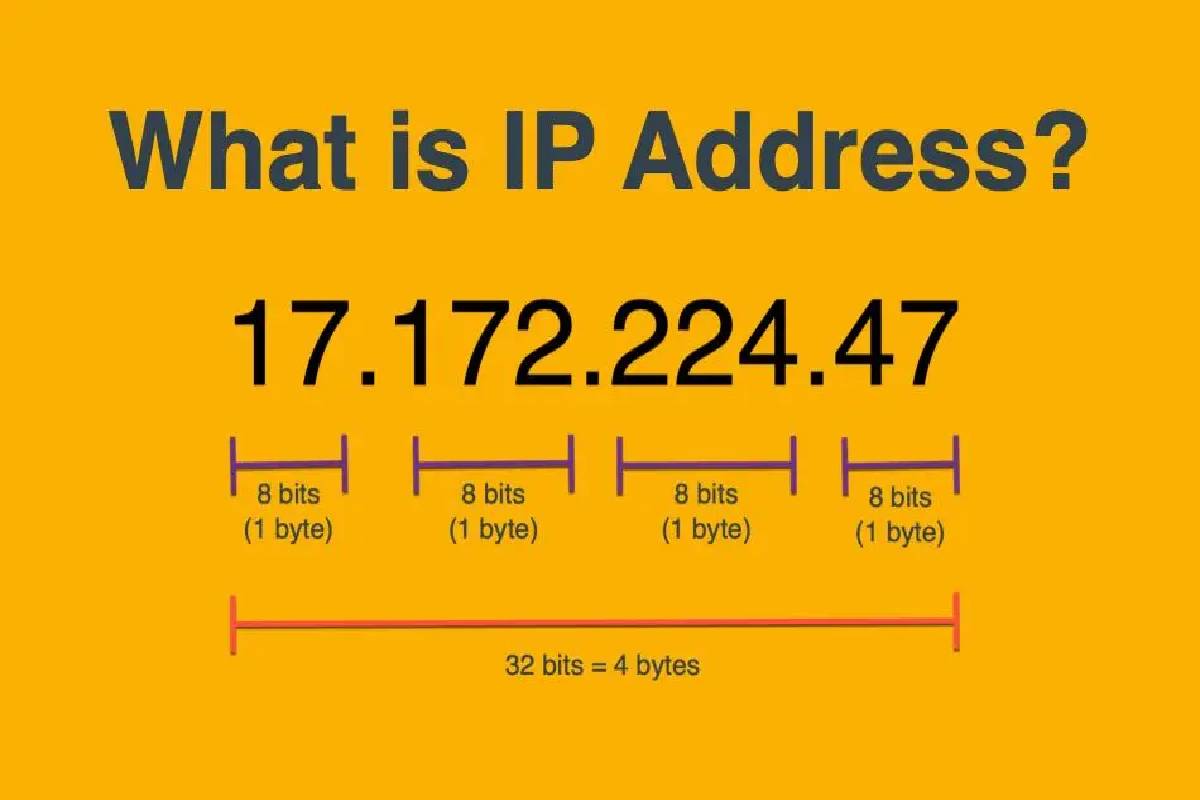Table of Contents
IP address Definition
“IP address” means “Internet Protocol address.”
This protocol is a set of rules for communication over the Internet, sending an email, streaming video, or connecting to a website.
An IP address identifies a network or device on the Internet.
Every computer, server, device, mobile phone, etc., that connects to the Internet is assigns a globally unique IP address.
It means that the transmitted data packets can be transmits correctly.
Functionally, the IP address corresponds to the telephone number in a telephone network or the postal address.
Structures of an IP address
There are two versions of IP addresses that look very different.
They have in common that they are made up of a so-called network part (for finding the way in IP routing) and a device part (for delivery to a specific computer).
IPv4 addresses for the present
- At the moment, addresses of the Internet Protocol Version 4 (short: IPv4) are mainly in use.
They consist of 32 bits, so technically, they are a 32-digit binary number such as B. 11000000 10101000 10110010 00011111. - It is usually represents as a combination of four decimal numbers with values from 0 to 255, separated by dots. Our example looks like this in this format: 192.168.178.31.
- With IPv4, a total of around 4.3 billion different addresses can be represent.
IPv6 addresses for the future
- Not least because of the Internet of Things (IoT for short), this fact will soon change:
- As more and more everyday devices can connect to the Internet and most of them require their IP address, the IPv4 address space is steadily running out.
- For this purpose, IPv6 introduce as a direct successor, with which around 340 sextillions (a number with 37 zeros) addresses can be represented – an almost inexhaustible supply for all future IP needs.
- Addresses of this version consist of 128 bits and should be written as a 128-digit binary number.
- However, since such a number would be far too long and therefore impractical, a hexadecimal notation uses instead, which divides the 128 bits into eight blocks of 16 bits, each separated by colons.
- It results in the IPv6 address 0000: 0000: 0000: 0000: 0000: ffff: c0a8: b21f, where the letters a to f also stand for hex digits.
- Leaving out the zeros at the beginning of each block and replacing a series of consecutive 0000 blocks with two colons (: :), this format can be simplified even further.
In our case, this results in the short form:: ffff: c0a8: b21f.
Network and device part of IP addresses
- When we want to send a letter, it is not enough to state the recipient’s country and city. For a complete address, we also need a street, house number, and maybe even the same floor.
- The same applies to data transmission: For a data packet to arrive at the right place, not only the respective network but also the target device (the host) in it must be recognizable from the IP address.
- For this reason, every IPv4 address is divided into a network and a device part using a so-called network mask.
- With IPv6, the address is broke down on the bases of prefix length:
- The first 64 bits known as the prefix (the network address),
- The last is the interface identifier (the host address).
What are the uses of IP addresses?
- An IP address is uniquely uses to identify and address a device in an internal or external network. It thus forms the basis for transporting information from the sender to the correct recipient.
- Firstly, If a device wants to send a data packet, the associated router uses the so-called IP header and compares the source IP with the destination IP.
- Secondly, If the network parts match, the sender and recipient are in the same network, and the package is deliver directly.
- If this is not the case, the router (the post office on the Internet) contacts the globally available Domain Name System (short: DNS).
It is responsible for name resolution on the Internet, i.e., translating device names into IP addresses and vice versa. - For example, when a website is called up, the DNS outputs the URL’s IP: Www.example.com becomes z. E.g., the IPv4 address 93.184.216.34 or the IPv6 address 2606: 2800: 220: 1: 248: 1893: 25c8: 1946.
- The data packet is forwards via several routers, networks, and subnets to the recipient’s router.
Who distributes IP addresses?
- The highest authority in the IP addresses assignment is the Internet Assigns Numbers Authority (IANA), a division of the Internet Corporation Assigns Names and Numbers (ICANN).
- It has complete control over the entire available IP address space. It assigns blocks of it to the five so-called Regional Internet Registries (RIR), namely AfriNIC, ARIN, LACNIC, APNIC, and RIPE NCC .
- The final is responsible for Central Asia, the Middle East, and Europe.
- Thus, Germany distributes the IP addresses assigned to local (Local Internet Registries, short: LIR) and national registration offices (National Internet Registries, short: NIR).
- They then pass this on to the (sub) provider or directly to end customers.
What types of IP addresses are there?
- A primary distinction is made between dynamic / changing and static/fixes IP addresses. There are also “special-purpose” IP addresses, most of which reserves for private networks.
- Dynamic IP addresses for surfing the Internet
- Dynamic IP addresses is most often uses for regular online surfing.
- When a DSL customer dials into the Internet via his router, his Internet Service Provider (ISP)
- For example, IONOS – assigns him a random IP address that has not yet been assigned.
- This allocation deletes after each session or changes automatically at regular intervals, usually every 24 hours.




